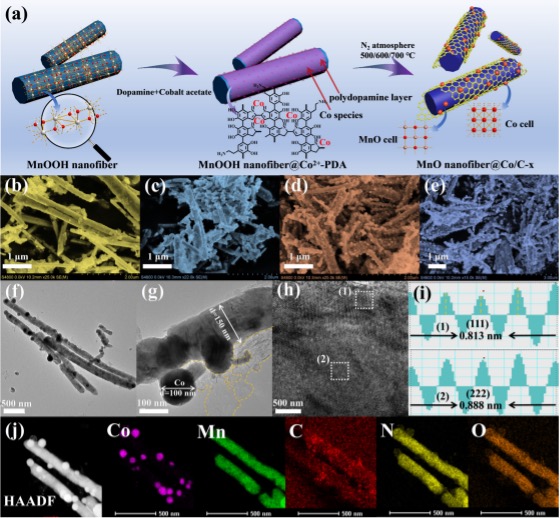| Aug 22, 2024 |
Nanocatalyst breakthrough revolutionizes wastewater treatment and pollutant degradation
(Nanowerk News) The urgent need for advanced technologies that ensure both safe water supply and effective pollutant degradation has driven researchers to explore innovative solutions. A recent study, led by Assistant Professor Edison Ang Huixiang at the National Institute of Education/Nanyang Technological University, introduces a cutting-edge nanocatalyst designed to significantly enhance wastewater treatment processes.
|
|
This work has been published in Materials Horizons ("Construction of Phase-Separated Co/MnO Synergistic Catalysts and Integration onto Sponge for Rapid Removal of Multiple Contaminants") and selected as part of the Emerging Investigator series collection.
|
|
In this research, the team developed a metallic Co-integrated MnO nanorod nanocatalyst (MnO@Co/C-600) through a precise synthesis process that involves phase separation, oxygen vacancy creation, and the Jahn-Teller effect. This process results in an optimized nanocatalyst with a thin carbon coating that enhances the redox capability of Co nanoparticles. The nanocatalyst's N-doped surface carbon network introduces polar sites that attract contaminants to reactive sites, thereby accelerating the degradation of pollutants.
|
 |
| (a) Schematic of MnO@Co/C-x synthesis. SEM images of Mn3O4/C-500 (b), MnO@Co/C-500 (c), MnO@Co/C-600 (d), MnO@Co/C-700 (e); TEM images (f, g); HRTEM images (h); inverse FFT pattern of (111) and (222) planes (i); HAADF-STEM and elemental mapping of MnO@Co/C-600 (j). (Image: Reproduced with permission from Royal Society of Chemistry from DOI: 10.1039/D4MH00285G)
|
|
The MnO@Co/C-600 nanocatalyst demonstrated an impressive performance in activating peroxymonosulfate (PMS) for the degradation of bisphenol A, achieving a rate constant nearly 20 times higher than that of conventional catalysts. The nanocatalyst's superior efficiency is attributed to its ability to generate multiple reactive oxidative species (ROS), including SO4, OH, O2, and 1O2, as well as its enhanced electron transfer pathways.
|
|
To further explore the nanocatalyst's potential, the researchers developed a monolithic integrated system by anchoring MnO@Co/C-600 onto a specially designed melamine sponge using a calcium ion-triggered crosslinking technique. This monolithic nanocatalyst system was tested for photothermal degradation of various contaminants, including bisphenol A, tetracycline, and norfloxacin. The results showed not only easy recovery and excellent stability but also superior total organic carbon removal when treating multiple contaminants simultaneously.
|
|
"This innovative nanocatalyst offers a powerful and sustainable solution for wastewater treatment, combining effective pollutant degradation with easy recovery and long-term stability," says Ang.
|
|
The study represents a significant leap forward in the field of water treatment technologies, showcasing the potential of integrating advanced oxidation processes with smart nanomaterial design. By providing a robust and efficient method for both pollutant degradation and water purification, this research contributes to the global effort to secure safe and clean water for all.
|
|
"With further optimization and scaling, our nanocatalyst could play a crucial role in addressing the pressing challenges of water scarcity and pollution," Ang concludes.
|

